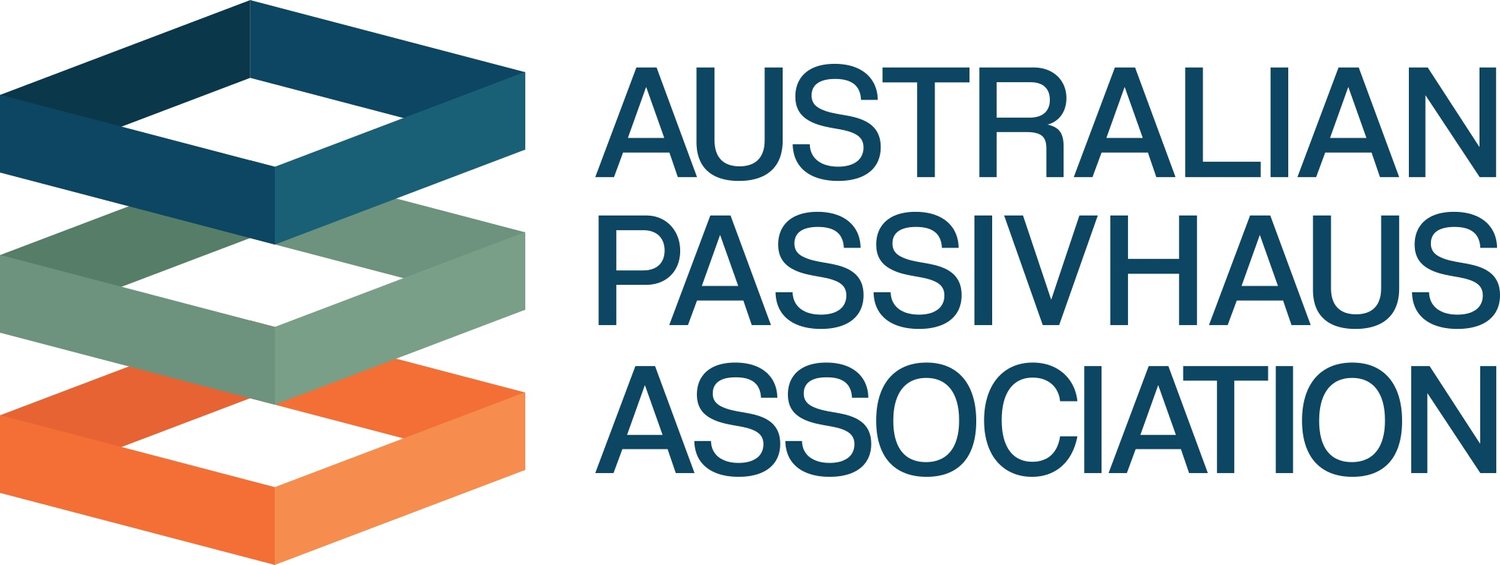Reflections from THRIVE : South Pacific Passivhaus Conference 2023
By Kate Nason, APA Chair













Its been a week since the Australian Passivhaus Association hosted the THRIVE : South Pacific Passivhaus Conference in Sydney. Although still extremely hard to put words to my experience of the event, I will do my best to articulate the motivation and sheer optimism it has evoked.
For those who have experience in the Not-For-Profit sector, events like these offer a vital opportunity to make an impact through sharing the work members, partners and the wider industry have been undertaking for a specific cause.
This year, we chose the title THRIVE as we wanted to focus in on the benefits that building to the Passivhaus standard can create. Wellbeing is a core focus of the standard, and after all, isn’t it a basic right to live and work in buildings that support our health? With this in mind, we collated some of the industries brightest minds and projects to shed light on this topic from across Australia and around the world.
Key Insights
Thank you to everyone who has posted insights and learnings from the conference on Social Media since the conference (as a colleague of mine noted – we may have broken Linked-In for a while there!) Although a little late to the party, here are some of my own key take-away. They are not technical, but instead draw on the attitudes, approaches and communication styles that I was particularly inspired by.
Be the ‘Conditionally Optimistic Mosquito’
A reoccurring analogy over the two days was that of the Mosquito. Its important to remember that even if you feel insignificant in the big scheme of things, impact is not tied to size or authority. Just think about being stuck in a room with a mosquito. Id like to build on this with a great insight from Zack Semke’s presentation centreted around optimism. Being the ‘optimistic mosquito’ will not be enough if we don’t use the right type of optimism. An optimistic child will wish for a treehouse for their birthday, where as a child that has conditional optimism will seek out timber, nails, tools, a guidebook and some helping hands to build them-selves the treehouse. We each need to be the Conditionally Optimistic Mosquito in our spheres of influence if we want to see change.
Building on this, Clare Parry and David Barker discussed how we must shift our perception from ‘problem’ to ‘potential’. Their 9 step Passivhaus Playbook is based on exactly this mindset providing a framework to assist the industry tackle the challenges of scaling Passivhaus into the multi residential and social housing sectors. (It will be launched shortly – keep an eye out!)
We need a lattice, not a chain
Capacity building was a hot topic at the conference. How do we upskill and empower our contractors, trades people, our designers, architects, decision makers and client groups to have the confidence to commit to and deliver Passivahus buildings? Why are we not hearing more clients ask for or want to commit to better outcomes?
On the closing plenary, Joe Karten, raised something that got me thinking. He noted that we need to stop talking about supply chains and value chains when trying to build capacity. Instead, we need to shift to a terminology that can capture the inherent complexity of this task – a multilateral lattice. We need to build capacity laterally across sectors of the industry, as well as hierarchically within each organisation. This will ideally include identifying champions across sectors and at all levels of a business and empowering them with the knowledge they need to influence change within their own realms of influence. This is how we build a market that demands better buildings, clients who commit to delivering them, and an industry who has the capacity to make this a reality.
The proof is most certainly in the pudding
A noticeable shift happened at this conference compared to the last one held in 2019 in Wellington NZ. Presentations shifted away from predictions and desk top modelling, to real world analsyis, as-built data and operational monitoring.
Australia is following our international counterparts now, with a strong shift of focus from proof-of-concept to demonstrated implementation and scalability.
As per the excellent presentation from Justine Prain, Energiesprong UK demonstrates how it is using a tried and tested policy framework from the Netherlands to deliver a deep energy retrofit program at scale across the country in the public housing sector. Through utilising strategic investments and funding models (such as the ‘Comfort Plan’) the program facilitates the commercialisation of construction solutions. These standardised, prefabricated systems are based on the principles of Passivhaus, and make it possible to provide comfortable, low energy and affordable homes to the mass market. Wouldn’t that be amazing to see in Australia..?
Health is everything
All presentations, panel discussions and conversations I had at the conference really did not focus heavily on energy or carbon…they focussed on health. We know energy bills and operational carbon can all but be erased if you add renewables to a Passivhaus building. But what was staggering was the unparalleled health benefits that can be realised by building to this standard. No mould, no damp, no build-up of CO2. Joseph Lyth shared his moving storey of designing and building his own Passivhaus. He was inspired to do this for the health of his family as his children were suffering from asthma and constant illnesses.
Since moving into the new home, he noted the vast improvement, not only in comfort but also in their collective health and wellbeing. Similar experiences were shared by Natalie Colbert who developed a Passivhaus Day care centre in Canberra. She moved her family into it during the Black Summer fires of 2019/2020 as it was ‘the only place where we could breath due to the smoke’.
These recounts, amongst other projects that shared end-user testimonies, were noted by many in the audience, as the most impactful messages they will take away from the conference. I would have to agree – unmatched and undeniable improvements in indoor environmental quality and health is by far the most compelling and emotive reason to pursue the Passivhaus standard.
Walking away from the conference, I have never felt more inspired, energised and motivated to scale Passivhaus in Australia - because everyone deserves to live and work in healthy, comfortable, low energy, resilient buildings.
Acknowledgements
I would like to take this opportunity to acknowledge some of the key people who made this conference possible, and drove it be as successful as it was.
The APA Team: Alexia Lidas, Samantha Bruce and Stalin – What a power team. Your sheer hard work, organisation and unwavering dedication to APA cannot be matched. APA is incredibly fortunate to have such an outstanding team taking it to new heights every day. Thank you for delivering this world-class conference, and everything else you do for our purpose-driven organisation.
Co-MC: Jeff Robinson - it was a pleasure to be Co- Master of ceremonies with you - you definitely set the bar high!
Thrive and Jive Host: Stiebel Eltron - What a night! Thank you for generously hosting over 100 guests in your stunning show room.
The Sponsors: thank you to the following companies for your ongoing and unwavering support of APA - aluplast, Blue Sky Windows, Stiebel Eltron, Pro Clima, Efficiency Matrix
The Exhibitors: Thank you for your support and being at the forefront of the industry, making it possible to deliver Passivhaus buildings in Australia. Thank you to Siegware, Laros Group, LogikHaus, Pro Clima, Stiebel Eltron, Rothoblaas, Fantech, Efficiency Matrix, aluplast, Eclipse
The Speakers- thank you to all the speakers, panellists and moderators who brought the conference to life with your outstanding case studies and insights. The knowledge you have so generously shared will be sure to make a huge impact as we strive for better, healthier buildings in Australia. Thank you to Sean Maxwell, Joseph Lyth, Matthew Cutler-Welsh, Marcus Strang , Kieran Leong, John Tallis, Chris Nunn, David Ritter, Andrew Martin, David Barker, Clare Parry, Jesse Clarke, Zack Semke, Ben Sincalir, Hamish White, Mark Van Haandel, Matthew Carland, Joe Mercieca, Ann-Marie Fallon, Andy Marlow, Talina Edwards, Daria Teodorowych, Justine Prain, Claire Bowles, Gavin Salt, Adam James, Natalie Colbert


















